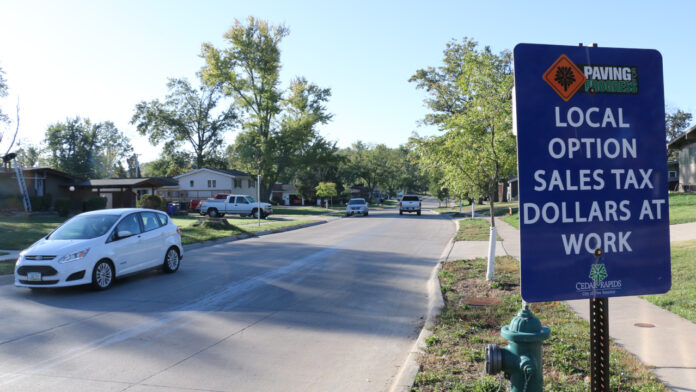
Linn County’s local-option sales tax, commonly referred to as Paving for Progress and known for funding roads and sewer projects, passed with 69.6% of the vote among metro residents and 63.3% of unincorporated residents Tuesday.
The outcome means the 1% sales tax will continue through 2034 instead of its previous expiration date of 2024.

The metro residents includes voters from Cedar Rapids, Marion, Hiawatha, Robins and Fairfax. Walford turned down the sales tax extension by a vote of 53 to 52.
Each city uses funding of the sales tax differently. Cedar Rapids utilizes 100% of the funding for maintenance, repair and and public street construction.
Marion will use 70% of the sales tax on street and sewer construction and improvements and 30% on community projects.
10% of funds in Hiawatha goes toward property tax relief, while the other 90% is spent on street improvements, public safety and retirement of debt, among the many uses.
Based on a survey from the Paving for More Progress committee in August, the results of Tuesday’s vote was no surprise. Of the respondents, 66.7% stated they supported the efforts to continue the sales tax for 10 more years.
As of July 2021, the one-cent tax had generated an estimated $122 million and funded 200 road improvement projects in the city, encompassing more than 60 linear miles of roadway – 70% of those being residential streets, the other 30% arterial roads.
Although a lot of work has been done, proponents of the plan believed the extension was critical for future improvements and upkeep.
“Prior to November of 2013, our streets were in a sorry situation,” Ralph Russell, co-chair of the Paving for More Progress committee and former Cedar Rapids City Council member, said. “The amount of money available through current sources was not enough to keep up with the deterioration. Since then, with the one-cent (sales tax), we’ve been able to do a lot of work, but we still have a lot to do.”
The current 10-year street management plan has been developed using pavement condition data collected on every roadway in Cedar Rapids. The data is collected by a van, rented from the Iowa Department of Transportation, that drives the surface of the roads and collects data on texture, pavement distress and roughness. Fresh data is collected every two years and the plan is updated accordingly.




